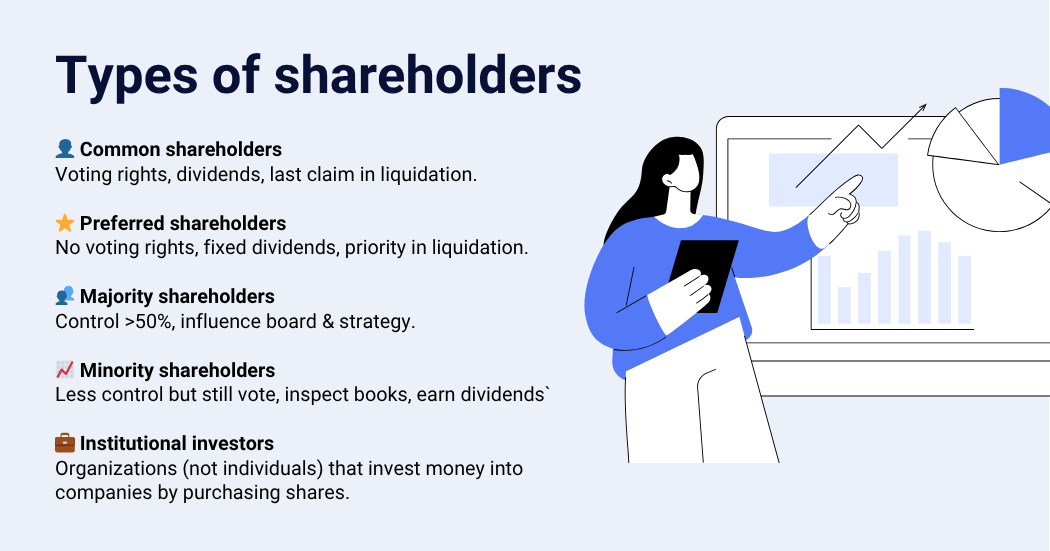Industry Insights, Legal Departments
How to manage legal entities with Excel
Microsoft Excel is a remarkably versatile tool. From basic calculations to complex financial modelling: many professionals use this software when managing data, and with good reason. Excel offers immediate accessibility and large flexibility. However, without a carefully structured setup, spreadsheets can lead to errors, inefficiencies and increased compliance risks. How to optimise your legal entity management thoroughly? Corporify explores Excel’s potential to the fullest, scrutinises its flaws and offers a way to move beyond its limitations.
Content:How to manage legal entity management with Excel
The disadvantages of using Excel to manage legal entities
What is legal entity management software?
How to manage legal entities with Excel
With its accessibility and user-friendly interface, Excel can serve as a powerful tool for legal entity management. However, to harness its full potential, it is essential to carefully design your spreadsheet framework. A well-structured Excel file can minimise errors and improve overall efficiency. How? We share four key tips to manage your legal entities by using spreadsheets.
1. Prepare the setup of your legal entity management system in Excel
Before diving into Excel, it’s vital to define your different stakeholders and identify their objectives. Understanding what information needs to be included in your spreadsheet will help ensure that it meets the specific requirements of your organisation.
2. Organise your Excel workbook effectively
Next, arranging your data in clearly defined columns with easy navigation is critical to an efficient spreadsheet. Use formulas, automate processes, apply data validation and adopt a consistent naming convention with unique identifiers to minimise errors, streamline tracking and entity management.
3. Keep track of your entity changes in Excel
To maintain accurate records, report and track every change to the entity. Represent your entities visually in org charts and implement a version control system to monitor updates and revisions. While keeping track of entity changes is a significant challenge, it is an indispensable step that cannot be overlooked.
4. Securely back up your Excel files
Ensuring the privacy and security of your spreadsheets is paramount. Set access controls to determine who can view or edit the spreadsheet, and employ password protection for sensitive information. Additionally, provide guidelines and training for your staff members, and do not forget to regularly back up your Excel files and store them securely in the cloud.
The disadvantages of using Excel to manage legal entities
While Excel’s intuitive interface makes it accessible for many tasks, its ease of use can become a double-edged sword for legal entity management. Over time, ensuring accuracy, efficiency and security by using Excel to manage legal entities and to maintain legal entity records, can become increasingly difficult.
The hidden pitfalls – such as user errors, version control issues and time-consuming updates – can hinder your workflow and increase the risk burden on legal professionals. Eventually, this approach often leads to an accumulation of separate spreadsheets and disjointed emails. A major problem is that scattered files and siloed information limit collaboration and control, which are both crucial in corporate housekeeping.
“To keep track of our complex stakeholder structures, we used to apply Excel, but it quickly became unmanageable. That was the moment we started looking for a solid, safe and effective alternative that went beyond the limitations of Excel.”
1. Controlling data entry
Excel’s capability to edit every piece of data enables users to incorporate additional information and tailor fields to their needs. But this remarkable flexibility comes at a cost: it significantly increases the likelihood of user errors that may have serious financial and operational consequences for your organisation. Even a minor error in corporate data can lead to costly repercussions that are difficult to rectify.
|
Challenge | Excel lacks the safeguards of dedicated legal entity management software.
|
2. Updating multiple spreadsheet versions
When updates are required, the challenge extends beyond the master file. You often have to revise numerous associated spreadsheets as well, a task that can quickly become overwhelming. Additionally, navigating the complex maze of user permissions and access rights adds to the work, as managing who can view or edit each spreadsheet is a time-consuming process.
|
Challenge | Updating Excel files is inefficient.
|
3. Collaborating in real-time
Excel does allow for simultaneous editing and real-time co-authoring, but this capability can lead to complications. When multiple users make changes at the same time, ensuring that all necessary modifications are accurately captured becomes a daunting task. This can result in confusion and discrepancies within the entity data, undermining the integrity of your records.
|
Challenge | Tracking every modification is virtually impossible without built-in version control
|
4. Reporting and organising entity management data
Excel lacks the capability to generate reports for specific points in time, leaving you with no choice but to rely on manual logging in calendars, project management tools, or yet another spreadsheet for corporate housekeeping. This reliance only exacerbates the problem of overflowing inboxes filled with unnecessary emails and scattered data, complicating the organisation of work and communication.
|
Challenge | Tracking changes across legal entities in Excel is difficult.
|
5. Securing private corporate data
Consider the potential fallout if your Excel file, containing sensitive entity data, were to be accessed by cybercriminals. The risks and damages associated with such a breach are immeasurable, underscoring the need for stronger security measures such as encryption and detailed access controls to mitigate these threats and safeguard confidential data.
|
Challenge | The security standards of Excel are limited.
|
Tired of the limitations and inefficiencies when using Excel to manage your legal entities?
Discover the power of Corporify today >>
What is legal entity management software?
Legal entity management software centralises all your entity documents and data in one place, making it easier and more efficient to manage your legal entities. The software provides a clear overview of ownership structures, automates compliance tasks like KYC and UBO requirements, and simplifies complex transactions across multiple departments. By implementing a reliable entity management system, you’ll significantly reduce administrative burdens, improve data accuracy and quickly access all the information you need for smarter decision-making. Beyond simplifying daily tasks, this tool helps you comply with evolving regulations.
Curious how an entity management system can enhance your organisation?
✔ Manage your entities while maintaining a clear overview
✔ Create and maintain digital shareholder
✔ Stay on top of regulatory requirements, like annual reports
✔ Centralise all your entity data in one place
✔ Automate tedious compliance tasks
✔ Instantly generate up-to-date org charts
✔ Share information seamlessly and collaborate with different stakeholders, including legal representatives
How Corporify trumps Excel
Corporify offers a robust, purpose-built alternative to Excel for legal entity management, enabling legal professionals to streamline governance, enhance data security, reduce risks and avoid the limitations of Excel’s open-access format.
With Corporify, sensitive data is secure and tamper-proof, so only authorised persons can make changes. A critical feature for functions such as maintaining share registers, where data integrity and controlled access are essential. Let’s dive in!
“Corporify has revolutionised our workflow, taking over much of the work we previously did with Excel spreadsheets. Integrating the platform into our own business went smoothly, thanks to the ability to import most of our existing data automatically.”
1. Complete document history and real-time visibility
One major drawback of Excel for entity management is its lack of visibility into document history, making it difficult to identify who made changes, when and why. Corporify addresses this by providing a complete audit trail with time-stamped modifications, detailing when and which user altered data.
Additionally, Corporify also includes useful tools, such as date pickers, allowing you to retrieve records from specific points in time. This feature provides a clear view of your entity’s history, adding transparency and accountability that Excel simply can’t offer.
2. Precision data and simplified entity management
While Excel’s ten-digit decimal constraint can be restrictive, Corporify provides high precision for all entity data, meeting the demands of clients who require greater accuracy. It also simplifies administration by offering tailored tools for legal professionals, such as digital share registers, org charts and automated templates.
For example, by including pre-defined fields essential for legal entity records, Corporify ensures a standardised approach to tracking ownership and compliance.
3. A single source of truth for legal entities
In Corporify, all corporate data and documents are centralised in a single, secure location. This avoids the inefficiency of scattered spreadsheets and silos, allowing teams to access up-to-date information whenever needed.
With this single source of truth, your data is organised and easily accessible, supporting data-driven decisions and enabling seamless collaboration with both internal and external stakeholders.
4. Advanced security with ISO-certified hosting
Security is a top priority for Corporify. Unlike Excel, where sensitive information can be vulnerable, Corporify offers robust data protection through encrypted private clouds with ISO 27001-certified hosting providers.
You can control exactly who has access to legal entity data, protecting against unauthorised intruders and ensuring your organisation’s corporate data is secure at every level.
Download the full Mini Guide about Excel
Our single source of truth offers a clear overview and increases your productivity by saving time and effort.


